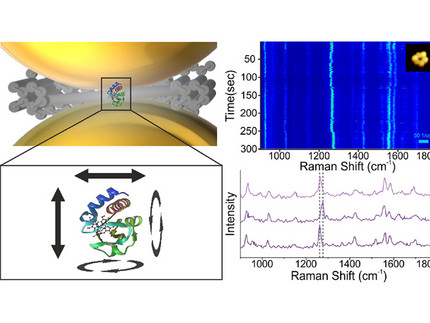Hybrid Nanostructures
Welcome to the pages of the Hybrid Nanostructures group. In our research we combine different methods from DNA nanotechnology, optical spectroscopy and scanning probe microscopy in order to study physico-chemical processes in nanoscale materials and at the single-molecule level. Apart from methods development we investigate specific questions such as the mechanisms of plasmon-induced chemical reactions, the nucleotide sequence dependence of DNA radiation damage and the mode of action of radiosensitizers that are applied in tumor radiation therapy.
We are members of the innovation center innoFSPEC and the research initiative "Elementary Processes of Light-Driven Reactions at Nanoscale Metals*.
Please note our advertisement for 22 PhD positions!
Our recent work:
Cytochrome C, an evolutionarily conserved protein, plays pivotal roles in cellular respiration and apoptosis. Understanding its molecular intricacies is essential for both academic inquiry and potential biomedical applications. This study introduces an advanced single-molecule surface-enhanced Raman scattering (SM-SERS) system based on DNA origami nanoantennas (DONAs), optimized to provide unparalleled insights into protein structure and interactions. Our system effectively detects shifts in the Amide III band, thereby elucidating protein dynamics and conformational changes. Additionally, the system permits concurrent observations of oxidation processes and Amide bands, offering an integrated view of protein structural and chemical modifications. Notably, our approach diverges from traditional SM-SERS techniques by de-emphasizing resonance conditions for SERS excitation, aiming to mitigate challenges like peak oversaturation. Our findings underscore the capability of our DONAs to illuminate single-molecule behaviors, even within aggregate systems, providing clarity on molecular interactions and behaviors.
From Bulk to Single Molecules: Surface-Enhanced Raman Scattering of Cytochrome C Using Plasmonic DNA Origami Nanoantennas; A. Mostafa, Y. Kanehira, K. Tapio, and I. Bald; Nano Lett. 2024, 24, 23, 6916–6923




